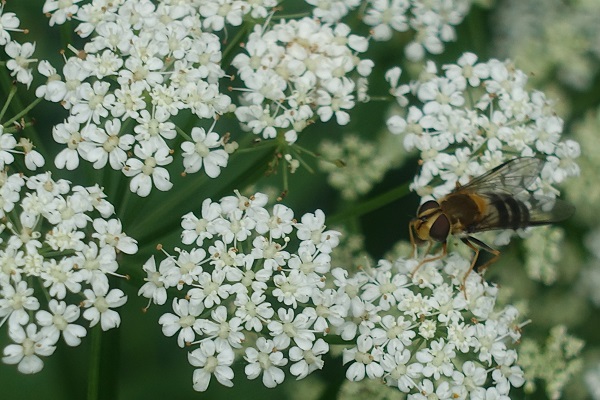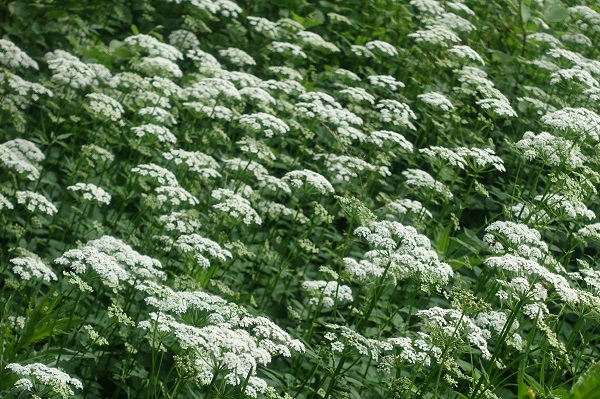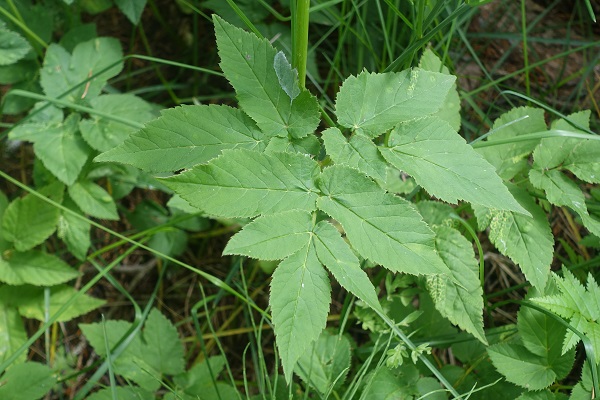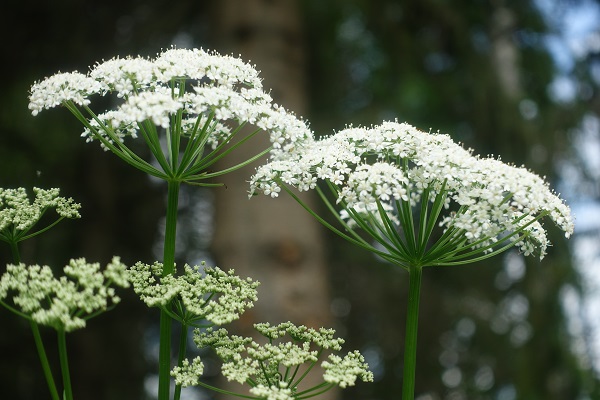|
|
| Life form: |
| Perennial, creeping rhizome |
| Stems: |
| Height 30-100cm, erect, hollow stems, upper part branching, base often reddish |
| Leaves: |
| Alternate; narrowly elliptic–ovate, base oblique, with serrated margins; stem leaves 3-lobed |
| Flowers: |
| Inflorescence a flat-topped compound umbel, secondary umbels 10–20; all umbels lacking bracts. The umbels of white flowers bearing a passing resemblance to the flowers of an Elder tree, the origin of this plant's common name. Petals 5, notched, tip recurved; calyx absent; stamens 5; pistil of 2 fused carpels, styles 2 |
| Flowering Period: |
| June-August |
| Fruits: |
| Schizocarp |
| Habitat: |
| Damp soil and shady locations |
| Distribution: |
| Common to all types of cultivated land in the country, except in the mountain regions where it occurs more rarely |

Derivation of the botanical name:
Aegopodium, may come from Aix- or Aig-, goat, and "-podium", foot.
podagraria, pod-, foot (a reference to the underground rhizomes), to which the term -agraria, meaning 'of cultivated land', is appended.
- The standard author abbreviation L. is used to indicate Carl Linnaeus (1707 – 1778), a Swedish botanist, physician, and zoologist, the father of modern taxonomy.
At one time Aegopodium podagraria was also used in herbal remedies for arthritis and gout.


|




